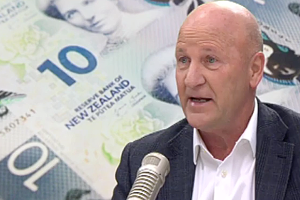
The number of mortgages reported in arrears increased to 1.51% in February, with 22,600 mortgage holders behind on their payments, the highest level since January 2020, data from credit reporting bureau Centrix shows.
Alongside rising mortgage arrears, non-performing home loans at 90+ days past due have risen sharply over the last three months.
Year-on-year the number of non-performing home loans is up by 44%, while early arrears are holding steady over the past year.
Meanwhile mortgage arrears are on the rise for loans opened during the period when the OCR rate hikes occurred (since October 2021). Thirty-plus-days arrears at 24 months on the books have risen from 0.2% to 0.5% in the past two years.
Mortgage applications are 6% lower compared to the same period last year, as sales volumes remain low, but new mortgage lending was up 5% in February compared to the same month last year, although sales volumes continue to be relatively low as buyers remain cautious.
Other lending down
On the other hand, non-mortgage lending is down 4% year-on-year due to lower volumes of new vehicle loans compared to last year. Overall new household lending is 3% higher on a year-on-year basis.
The bureau says the picture emerging is uncertainty for this year overall.
Centrix managing director Keith McLaughlin says there are reasons to be cautiously optimistic. Overall credit arrears are showing signs of improvement, with the number of people behind on their payments down 23,000 month-on-month and falling back to 457,000.
Although this improvement was expected following the seasonal uptick of late payers in January, demand for credit was also up 3% compared to the same period last year, buoyed by higher volumes of applications for unsecured credit.
However, the bigger year-on-year picture, shows arrears are 8.1% higher, tracking closely to 2018 levels after coming off historic lows, he says.
“We continue to see arrears rise for mortgages, personal loans and buy now pay later (BNPL) products as debt and financial stress builds.”
Interestingly, vehicle loan applications are 16% down year-on-year, as new car sales continue to show a decline.
Hard hit sectors
Whilst business credit demand is up 7% and has risen more than 10% for the hospitality, retail and transport sectors over the past year, the hospitality sector will undoubtedly continue to face challenging months ahead.
Defaults for the property/rental sector were up 100% year-on-year, followed by retail trade (up 41%), transportation (up 34%) and construction (up 23%).
Pubs, bars, restaurants and cafés are at most risk as weak customer demand, rising costs and ongoing staff shortages pinch.
There are almost 30,00 registered hospitality companies in New Zealand, making up 4% of all registered companies.
At the moment, hospitality businesses are more than two times likely to fail than the typical business.
In February, 17 hospitality companies filed for liquidation compared to 12 liquidations the month before.





Comments
No comments yet.
Sign In to add your comment